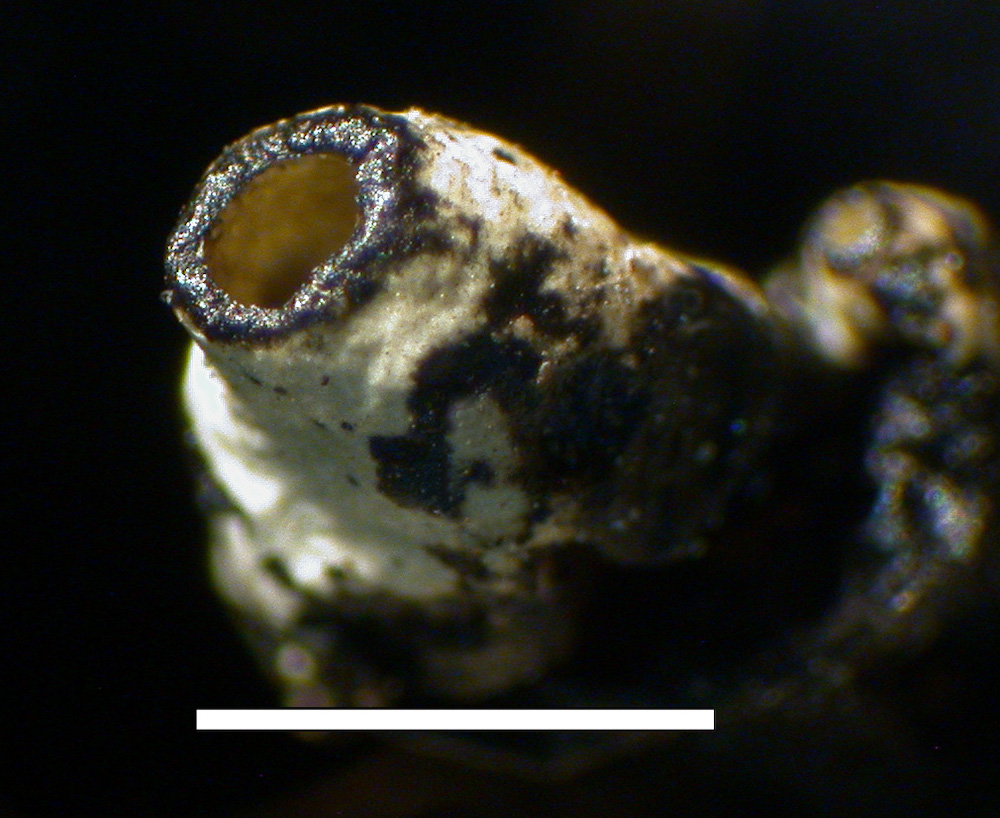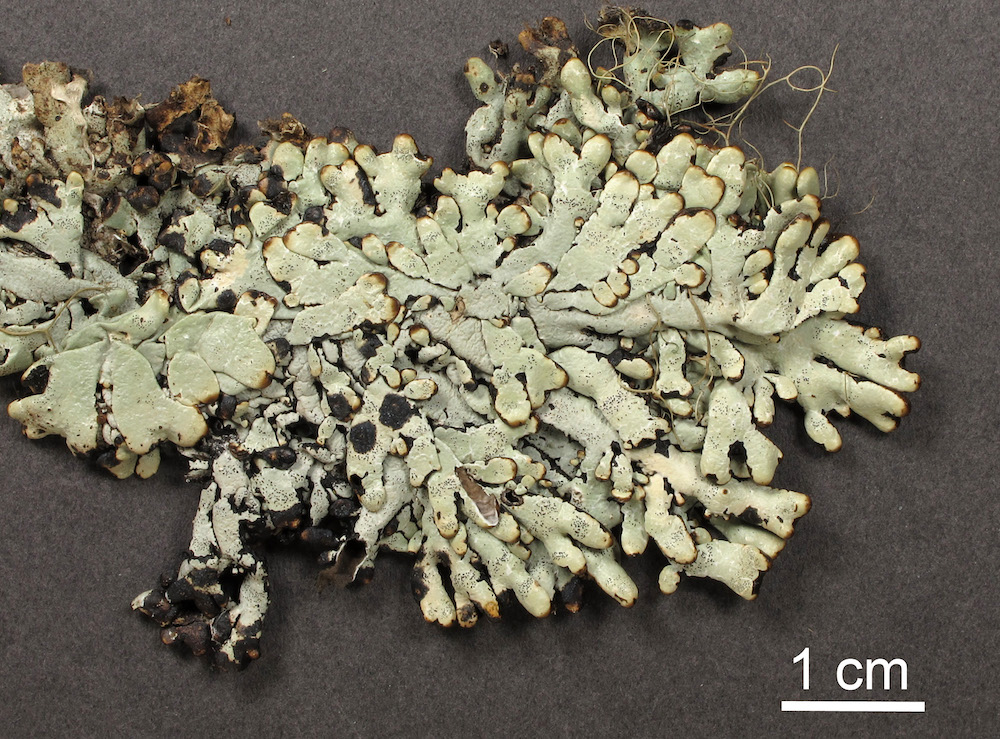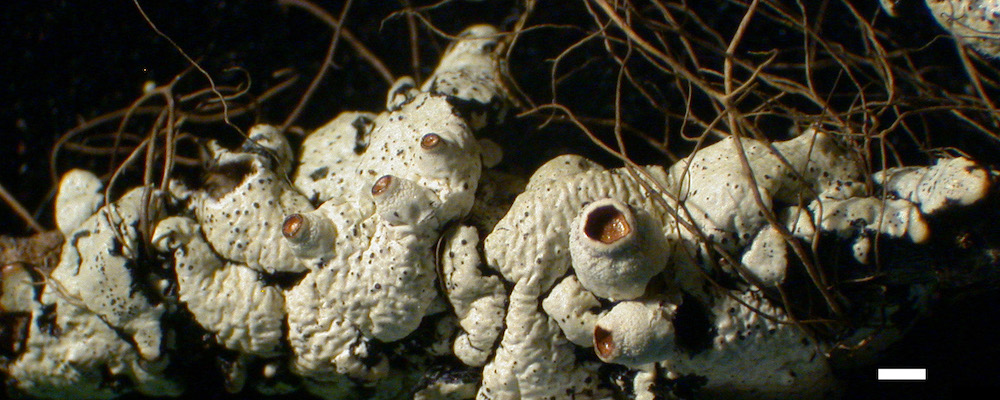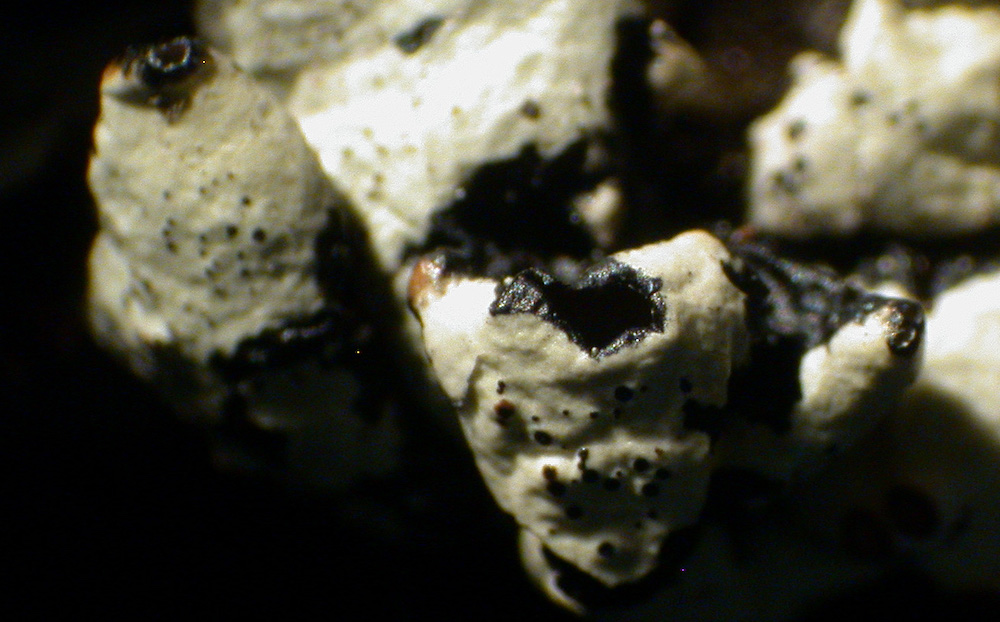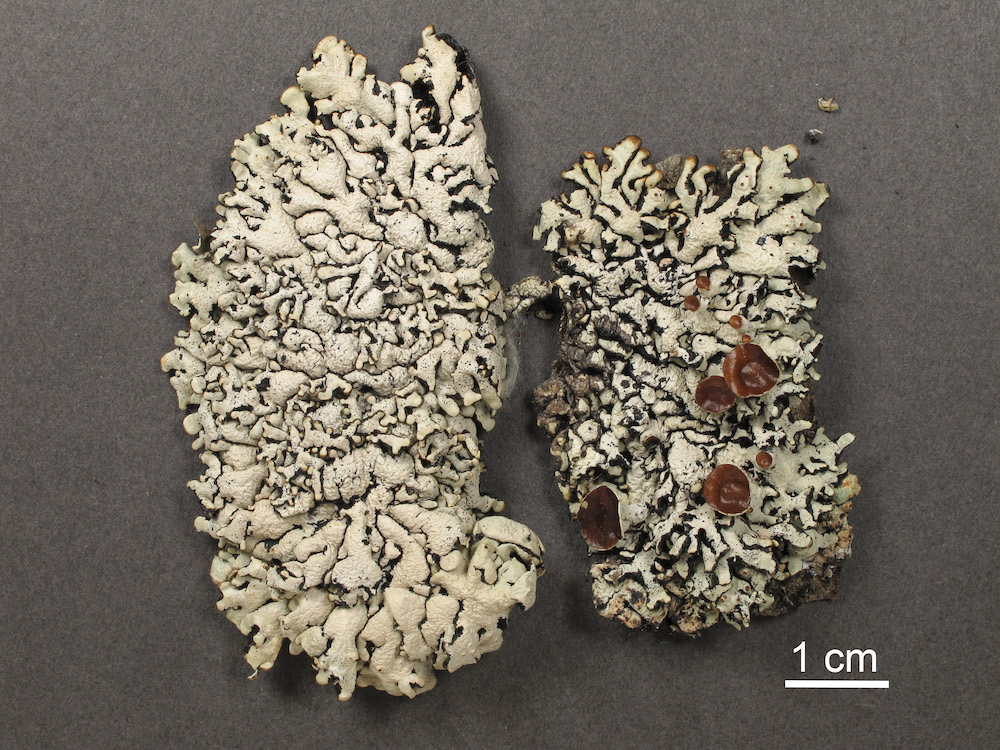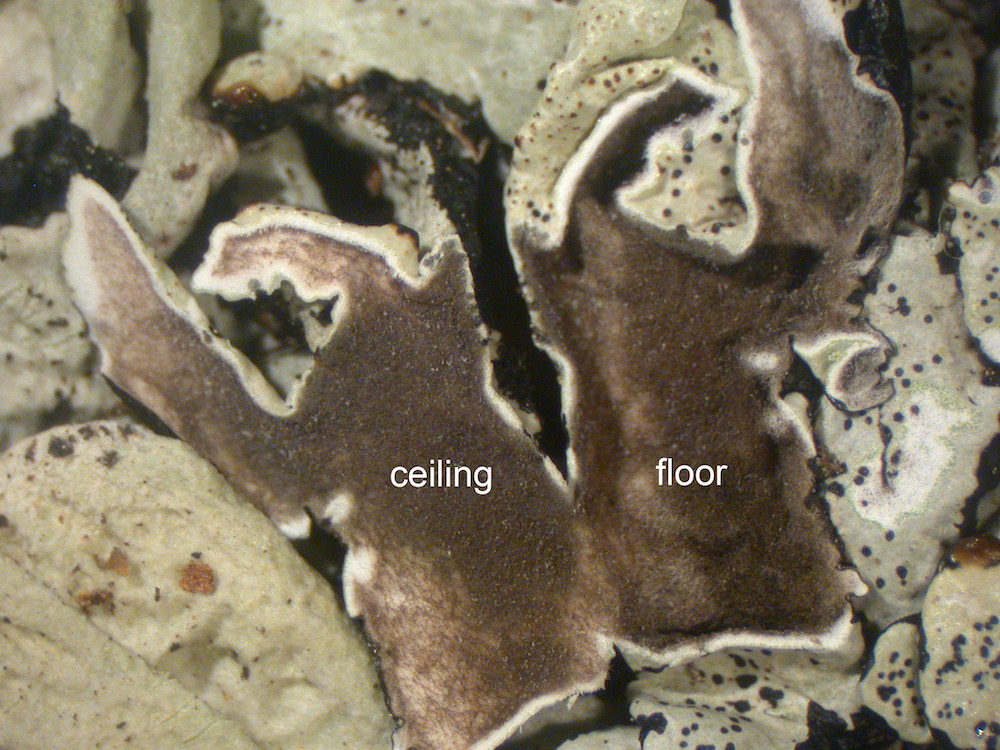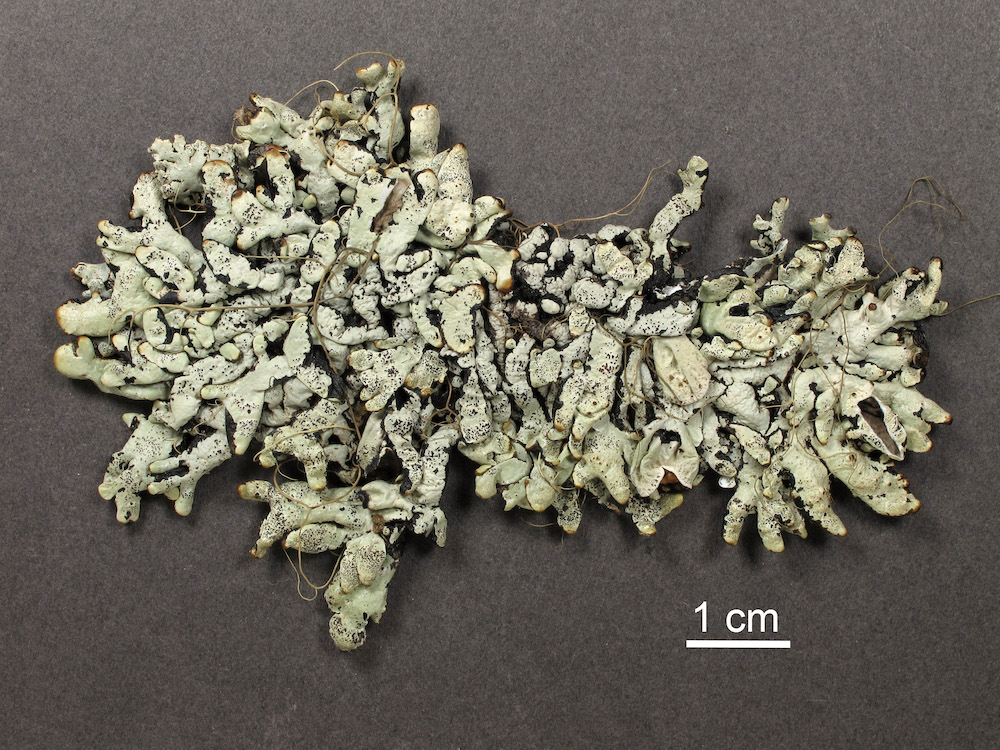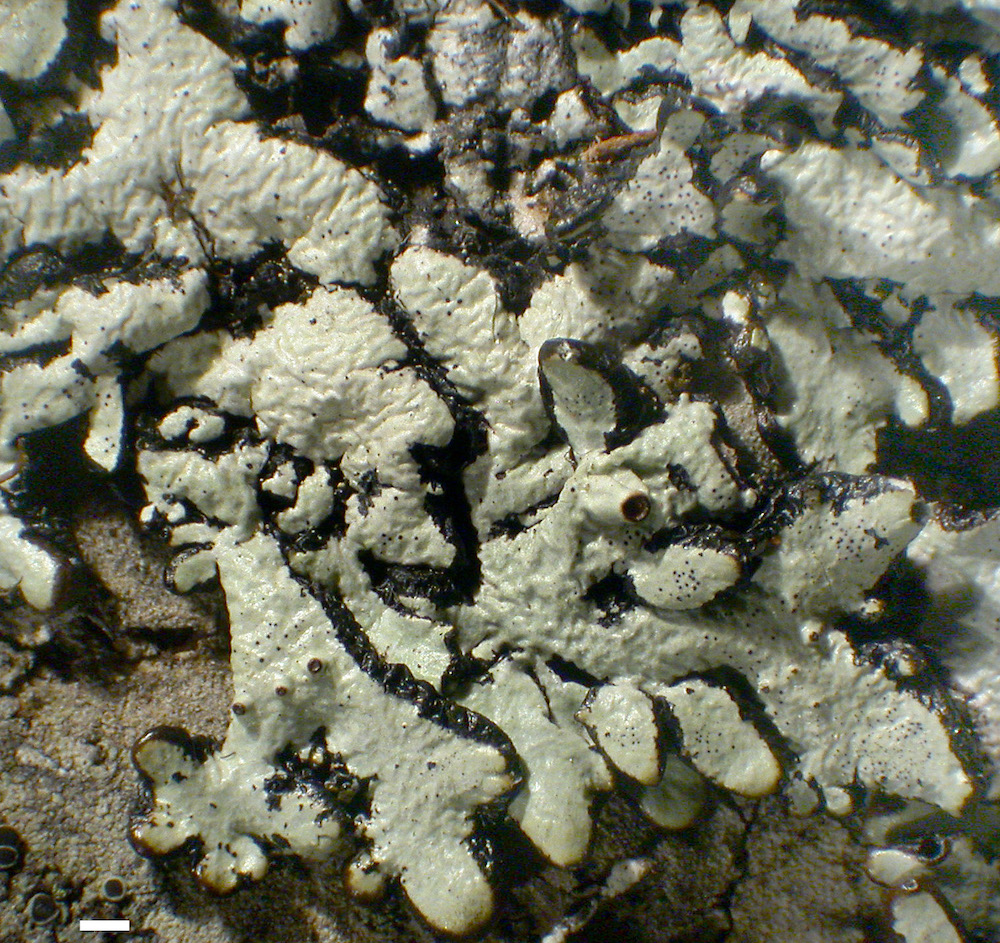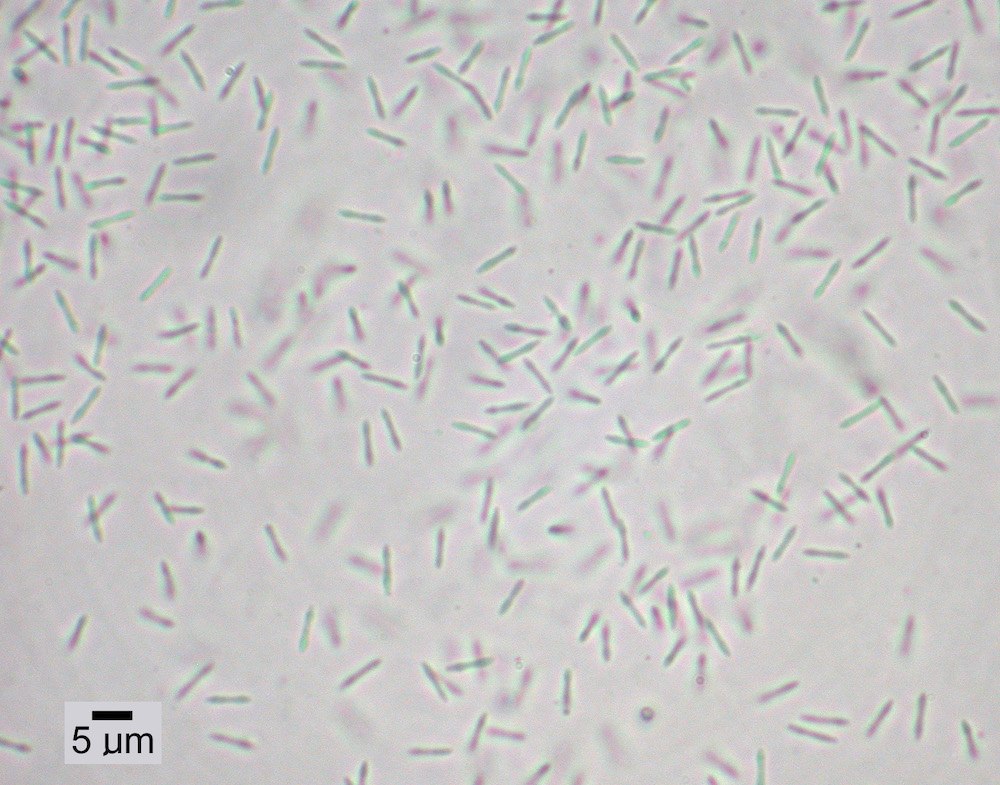Click on Characteristic name for explanation. Click on image for larger version.
Overview
| Synopsis:
| Appressed, puffy lobes, with short bud-like side lobes, often rugose upper surface, conspicuous perforations in lobe tips and axils, medulla K-, KC+ orange, P-.
|
| Distribution:
| Alaska to S Cal inland to northern Rockies
|
| Habitat:
| cool, moist conifer forests
|
| Range:
| Central and Southern California, Pacific Northwest Immediate Coast, Northern Rocky Mountains, Pacific Northwest
|
| Other Diagnostics: | Swollen lobes with dark interiors and perforate tips; always P-. In southern end of range specimens are often depauperate but I find no consistent differences other than size. Spores may be smaller and more elongate in San Luis Obispo Co, CA.
| | Substrate Notes: | On logs, stumps, Eucalyptus (dead and alive), conifers, Tusga diversifolia (Japan), Picea sitchensis and other conifers (N Am)
| | Abundance in North America: | Locally common
| | Substrate: | Typically
| | Host: | Conifers and hardwoods
| | On Rock: | Never
| | On Moss/Detritus/Sod: | Never
| | Authority: | L. H. Pike
| | References: | Pike & Hale (1982)
| | Synonymy: | None
|
|

Habit
|
Vegetative Structures
|
|
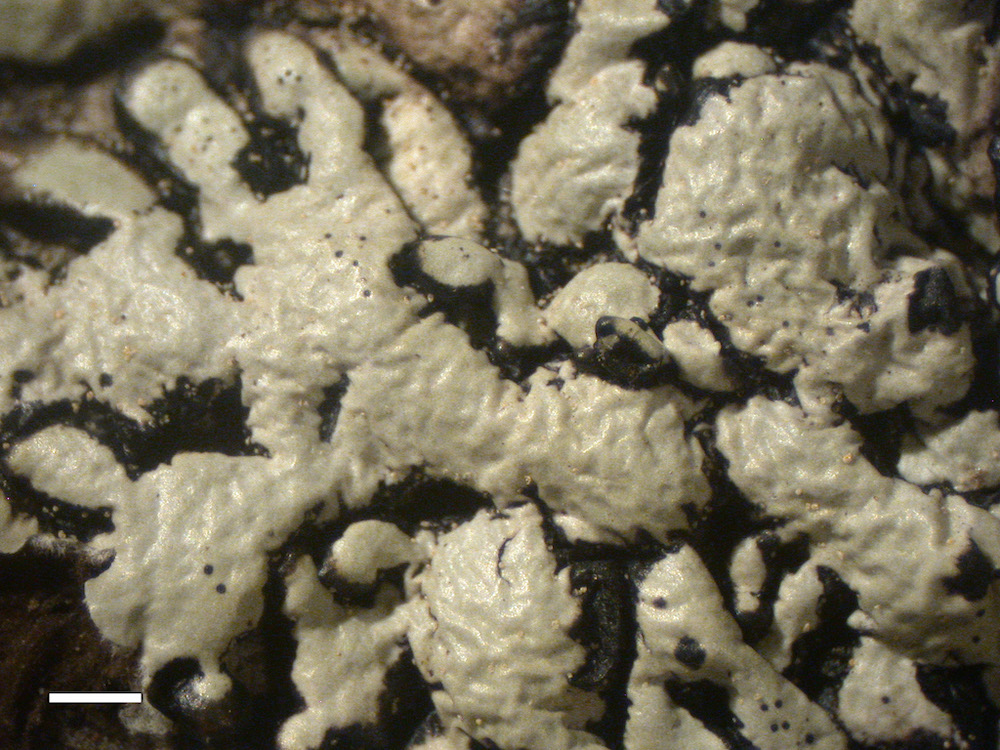
Upper surface rugose
1/13
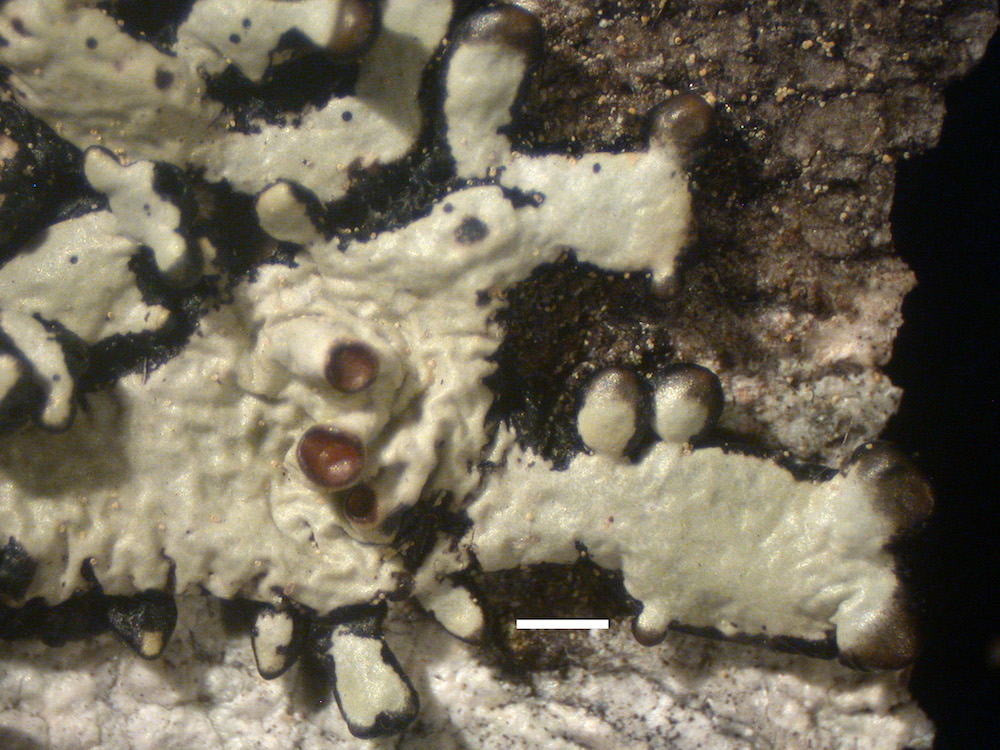
Budding adventitious branches
5/13
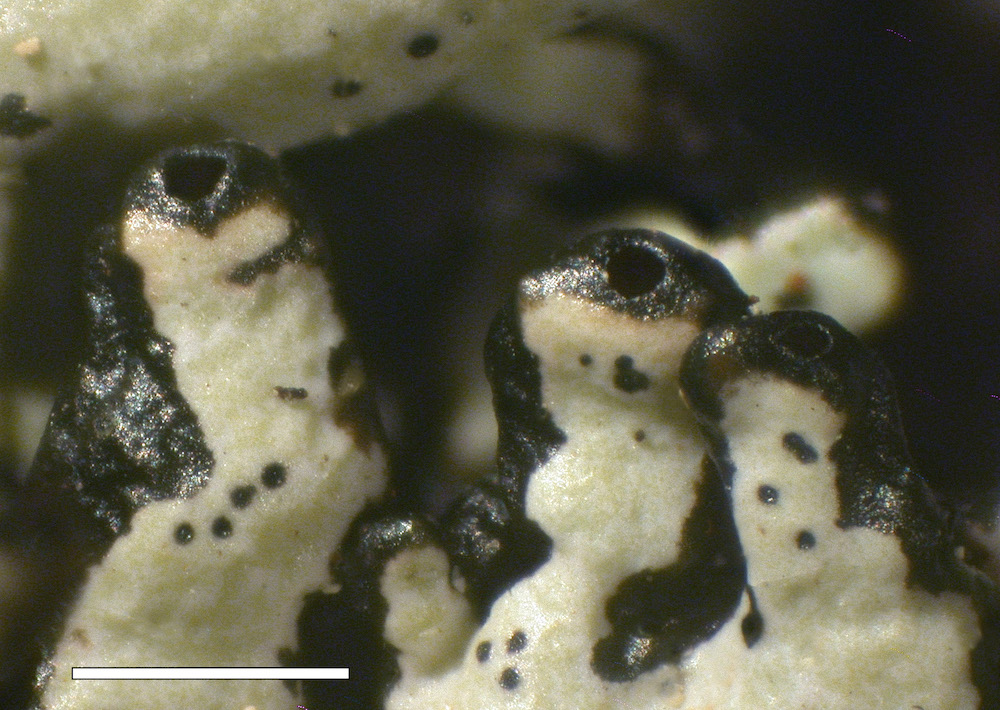
Perforate lobe tips
11/13
|
Chemistry
|
|
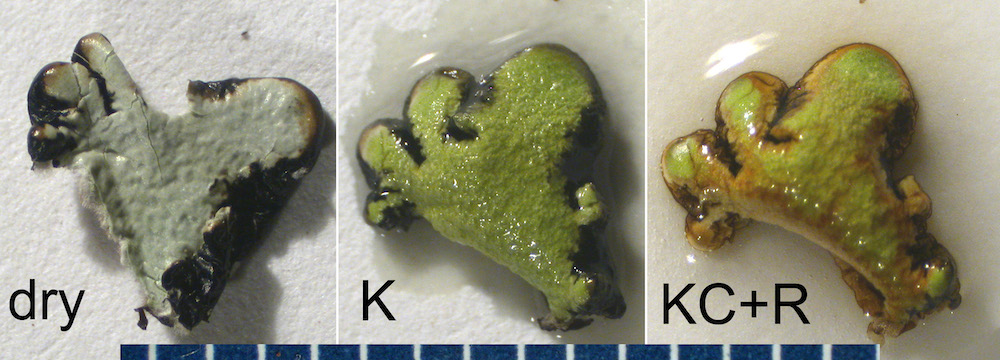
KC+ red spot test
|


